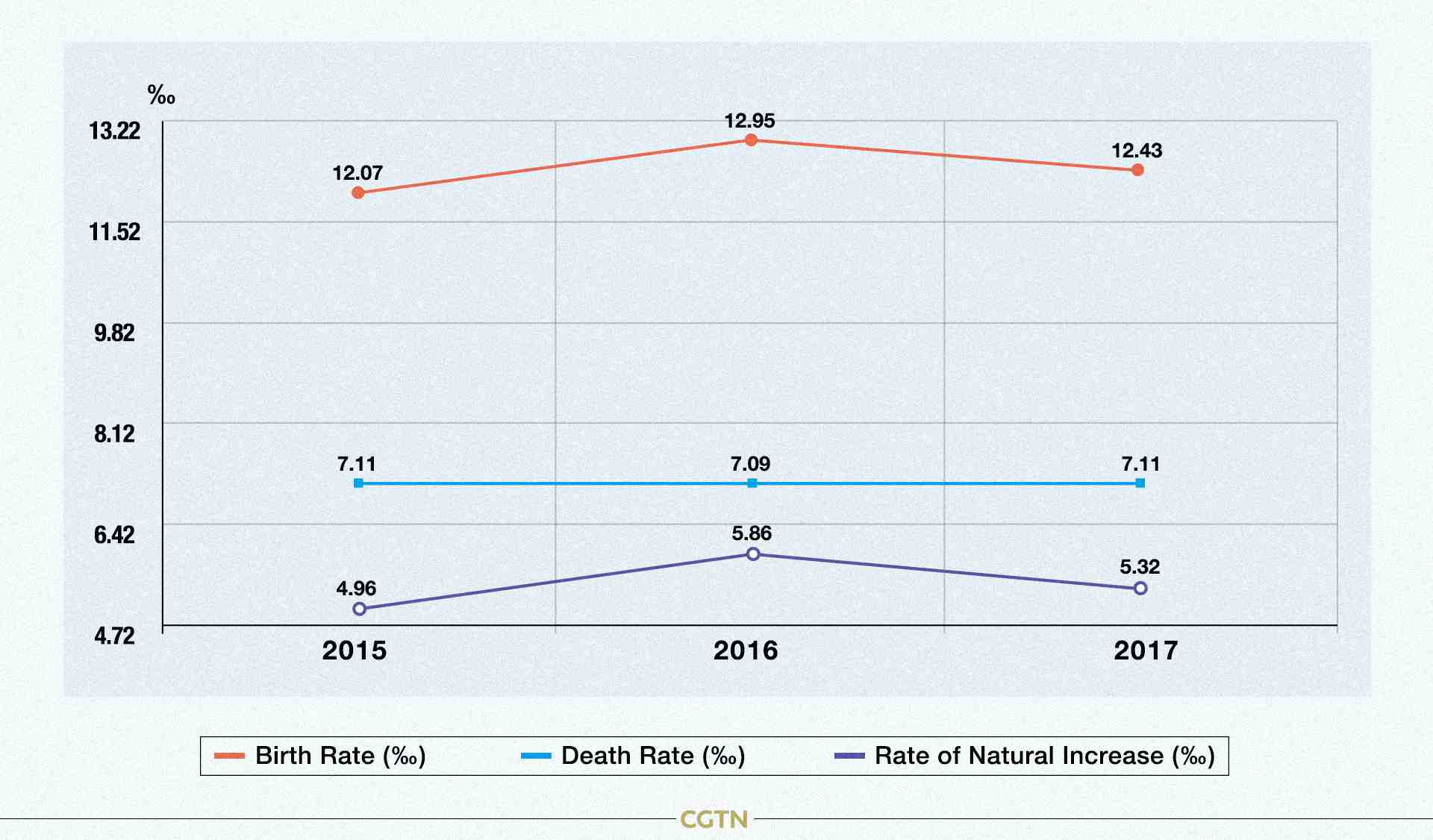
China
16:45, 05-Jan-2019
China heading to era of negative population growth: Green paper
Updated
15:53, 08-Jan-2019
CGTN

China's population is expected to reach a peak of 1.44 billion in 2029 before starting to shrink in 2030, dropping to 1.24 billion by 2065, the same levels as in 1996, according to a new paper published on Thursday.
The "Green Paper on Population and Labor" is the work of the Chinese Academy of Social Sciences and the Chinese Social Sciences Academic Press, and quotes figures forecast by the United Nations.
The document points out that if the total fertility rate remains at 1.6, China would experience a negative population growth ahead of 2027, with the population shrinking to 1.17 billion by 2065 – the same levels as in 1990.
A demographic crisis is looming on the horizon for China, despite the country abolishing its decades-long one-child policy amid a growing aging population.

China's birth rate, death rate and the rate of natural increase from 2015 to 2017 according to data by the National Bureau of Statistics. /CGTN Photo
China's birth rate, death rate and the rate of natural increase from 2015 to 2017 according to data by the National Bureau of Statistics. /CGTN Photo
However, the relaxed policy seems to have minimal impact on the country's population growth.
According to data from the National Bureau of Statistics, the first year after putting an end to the one-child policy, the national birth population in 2016 reached 17.86 million, with an increase of 1.31 million people compared to the year before. However, the number of newborn babies declined in 2017 to 17.23 million.
Since 2011, China has also seen a rapid growth of its aging population. The total number of elderly people is predicted to increase by 224 million from 2010 to 2040, with an average annual growth rate of 3.62 percent or 7.46 million people, according to the paper.

China is expected to experience a negative population growth from 2030, according to the "Green Paper on Population and Labor". /VCG Photo
China is expected to experience a negative population growth from 2030, according to the "Green Paper on Population and Labor". /VCG Photo
China's demographic situation is bound to bring about negative consequences to the country's economic and social development, said the green paper.
The negative population growth will directly lead to a decline in labor force, putting pressure on the economic development in the long run, said Li Jianmin, co-writer of the green paper and professor of economics at Nankai University, in an interview with China Central Television (CCTV).
He added that the decline in birth rates is changing the country's demographic structure, as the proportion of the aging population gradually increases.
The negative population growth, which resulted in the increasingly aging population crisis, would also bring a huge pressure to the country's current social welfare and pension system, as well as the healthcare sector. The shortage in medical workers and nursing workers would also become a problem in the future, said Li.

The negative population growth will directly lead to a decline in labor forces in China. /VCG Photo
The negative population growth will directly lead to a decline in labor forces in China. /VCG Photo
So how to cope with the novel yet inescapable trends of the upcoming crisis? The paper has urged the government to come up with research and coping strategies.
Lu Jiehua, vice president of the China Population Association and professor at Peking University, told CCTV that a fully relaxed birth policy is not enough to boost the birth rates, adding that supporting facilities such as education resources, housing, social welfare and medical insurance should be further improved to adapt to a new aging society.

SITEMAP
Copyright © 2018 CGTN. Beijing ICP prepared NO.16065310-3
Copyright © 2018 CGTN. Beijing ICP prepared NO.16065310-3